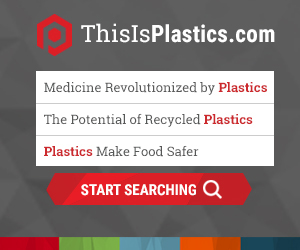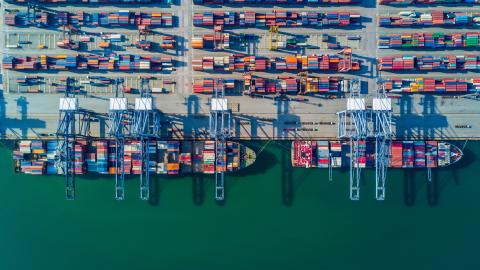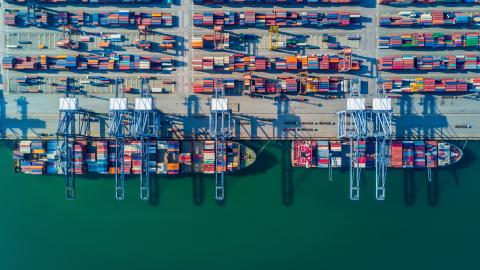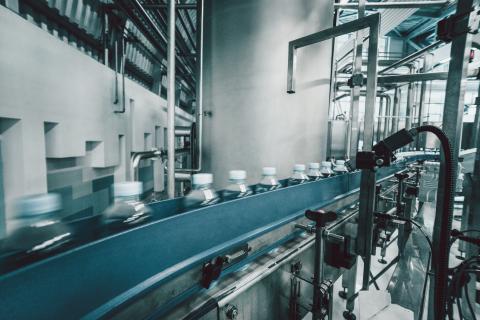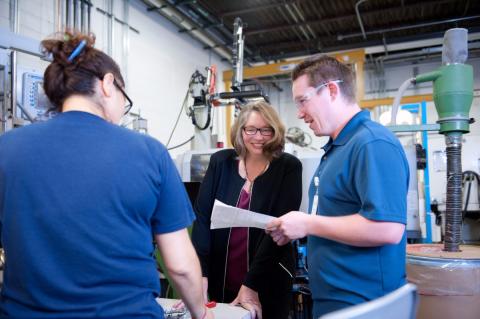By Perc Pineda, PhD
Chief Economist
PLASTICS
Mexico is the largest export market of the U.S. plastics industry. Trade in plastics between the two countries has been facilitated by the U.S. Mexico Canada Agreement on free trade. Preliminary trade estimates show that U.S. plastics exports to Mexico consisting of plastics materials and resin, plastics working machinery, molds for plastics, and plastic products increased by 5.9% last year to $19.1 billion in FAS (free alongside ship) value. U.S. imports from Mexico increased at a higher rate at 17.8% to $7.4 billion based on customs import value. The total plastics trade volume between both countries is estimated at $26.5 billion in 2022. I sat down with Aldimir Torres, President of ANIPAC (Asociación National de Industrias del Plástico A.C.), Mexico’s plastics industry trade association, to talk about plastics trade between the U.S. and Mexico.
Perc: Aldimir, thank you for taking the time to sit down with me and have this cross-border plastics trade conversation. U.S. and Mexico have been each other’s largest trading partners for years. This was possible when the North American Free Trade Agreement (NAFTA), the free trade agreement between the U.S., Mexico, and Canada, came into force on January 1, 1994. The free trade pact was renegotiated and substituted by the United States-Mexico-Canada Agreement (USMCA) which took effect on July 1, 2020. What has been the impact of USMCA on Mexico’s plastics exports to the U.S.?
Aldimir: Perc, it is a pleasure to always be in constant communication with the U.S. Plastics Industry Association. Trade in plastics and resins in Mexico remains relatively stable. Exports have been increasing gradually, except in 2020 when there was a 1.5% drop in exports of finished products – recovering to 18.6% in 2021. Imports from the U.S. to Mexico remains at 60.0% of what is received and exports to the U.S. occupy more than 75.0% of what leaves the country. The FDI (Foreign Direct Investment) directed to the plastics industry comes mainly from the U.S. and represents around 37.0%. However, in 2020 there was a decrease of 18.8% in investment inflows.
Perc: Well, 2020 was a challenging year globally with some countries doing better than others. For instance, data shows that total FDI into the U.S., in all industries fell 60.8% in 2020. If we look at FDI in manufacturing, which captures plastics manufacturing, it decreased 77.3% in 2020. While these estimates are without current-cost adjustments, it’s a given that the COVID-19 pandemic resulted in significant changes across industries globally. How can both the U.S. and Mexico improve and grow their cross-border trade in plastics?
Aldimir: Facilitating customs procedures, achieving a consensus on regulations that do not put the industry in conflict in both countries. The manufacturing sectors of both countries are interconnected. Developing the skills and abilities in all sectors of the plastics industry will support growth in the plastics cross-border trade in both countries. There is still so much both countries have not explored in terms of plastics materials and products applications.
Perc: Global economic growth is projected to slow down this year. Earlier this year, the World Bank projected global growth to slow to 1.7% in 2023. The International Monetary Fund (IMF) is now expecting the global economy to expand by 2.8% this year – more optimistic than the World Bank. Still, both projections reflect slower economic growth from 2022. The World Trade Organization expects the volume of merchandise trade (imports and exports) globally will increase by 1.7% this year. This will have implications on global plastics trade. Between the U.S. and Mexico, trade will also be affected by global growth considering both continue to trade with other countries. In my latest Plastics Quarterly forecast, I expect U.S. real gross domestic product (GDP) growth of 1.0% in 2023. The Bank of Mexico revised its GDP forecast from 1.6% to 1.8% in 2023 and the IMF is now expecting Mexico’s economy to grow by 1.8% this year. Any concerns that Mexico’s plastics exports to the U.S. could slow?
Aldimir: There are key markets such as the automotive and electrical-electronic markets that strengthen foreign trade in Mexico. However, a slowdown has been seen, for example in times of pandemic. Also, a lot depends on economic growth in the two countries.
Perc: Yes, the pandemic caused trade to slow as many industries slowed product. U.S. exports of plastics—resin, equipment, molds, and products—to Mexico decreased 11.0% in 2020. During the same year, U.S. imports from Mexico, decreased by only 0.6%, which to me speaks of the importance of Mexico to U.S. manufacturing and the whole economy. In the U.S. the main customer of the plastics industry is the manufacturing sector, with 89.0% of plastics products eventual ending up in personal consumption expenditures. Grateful if you can share with us some insights where plastic products are most used in Mexico.
Aldimir: Sure. In Mexico, the largest consumption of plastics resin is in the container and packaging sector, which is 47.0%. Outside of that, 21.0% goes in what I refer to as general consumption and 12.0% in construction. There’s 7.0% and 6.0% in electronics and automotive, respectively. The other 4.0% goes to the medical and other sectors.
Perc: In our 2022 Global Trends Report, which is our flagship publication on global plastics trade, we highlighted our trade relationship with Mexico. Mexico is the largest export market of the U.S. plastics industry—that is the total of plastics materials and resin, plastics machinery, molds for plastics, and plastic products.[1] U.S. exports to Mexico totaled $18.0 billion in 2021, which increased by 31.7% from 2020. U.S. plastics imports from Mexico rose 32.6% in 2021 to $7.2 billion. What, in your view, would be the fast-growing segment of the plastics industry in Mexico in terms of its imports from the U.S. – resin, machinery, molds, or products?
Aldimir: Mexico imports significant plastics materials and resin from the U.S. The resin segment mainly, polypropylene, polyethylene, and copolymers will continue to be fast-growing.
Perc: Let’s talk about the role of Mexico in the global plastics industry. I trademarked the annual Global Plastics Ranking™ which is issued as a chapter in our annual Global Trends Report. The purpose is to track the importance of production and consumption of plastics in a country’s economy in comparison to other countries. Mexico has consistently ranked the 10th global player in plastics trade for the last four consecutive years. The U.S. and Mexico are the only countries from the Americas that are in the top 10 countries. What do you think is the biggest challenge our industry is facing today and, in your opinion, how are we as an industry addressing it—from your perspective in Mexico.
Aldimir: The biggest challenge, I consider worldwide, is to face the prohibitions and regulations that exist on plastic products, which are the result of efforts to prevent and mitigate environmental pollution. It is hard work to seek dialogues with the ministries and secretariats, to raise awareness in governments and in society itself about plastic materials, and to demystify many already acquired concepts, which unfortunately are inaccurate characterizations of plastics. However, the industry is not backing down. It is a fact that the plastics industry contributes to the path towards sustainability—promoting a circular economy for example. In Mexico, the National Agreement for the New Plastics Economy was promoted and signed in 2019 and the three results presented have had favorable figures that reflect the commitment of the industry. To name a few – we actively participate in the review and development of federal regulations and laws, such as the recently approved Circular Economy Law. Also, we promote and support the preparation of management plans in different sectors of the industry and Mexico’s economy.
Perc: Aldimir, in my time with you in Mexico in the past, I have seen firsthand how engaged ANIPAC is with the industry and society. It’s always good catching up. As you are aware PLASTICS 2023 Global Trends Report will be launched in Mexico at PLASTIMAGEN in November. I look forward to working with you and your team. For the plastics industry—the world is our market. And I don’t foresee the importance of plastics trade to U.S. and Mexico diminishing in the near- or the long-term. The plastics industry supports employment in the U.S. and Mexico. The millions of workers in plastics manufacturing in both countries are aware of their positive contributions to society.
Aldimir: Perc, We look forward to welcoming you at PLASTIMAGEN 2023. We are convinced that the sum of our efforts will only result in common benefits for industry, society, governments and of course the environment.
Perc: Thank you for your time.
[1] See PLASTICS 2022 Global Trends Report at https://www.plasticsindustry.org/globaltrends for detailed information including the annual Global Plastics Ranking.TM
Recommended Posts
-
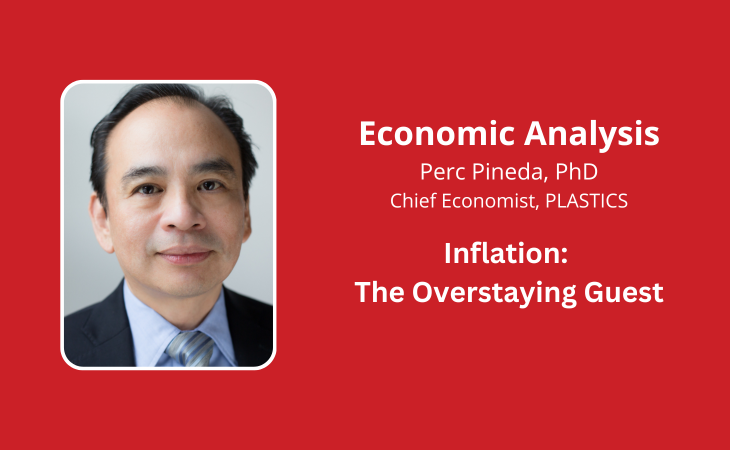
Industry News
Inflation: The Overstaying Guest
June 5, 2023 The market is currently anticipating a 25 basis point Fed funds rate hike at the June 14th Federal Open Market Committee meeting, with a 64.2% probability according to the CME FedWatch Tool. -
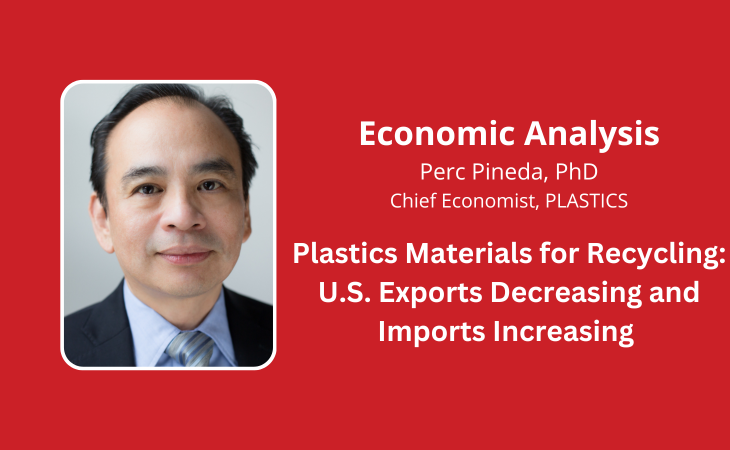
Industry News
Plastics Materials for Recycling: U.S. Exports Decreasing and Imports Increasing
May 30, 2023 As government representatives gather in Paris, France, this week under the auspices of the United Nations Environment Assembly, to discuss an international, legally binding instrument on plastics, it is crucial for all participants to consider the millions of workers employed in the global supply chain of the plastics industry. -
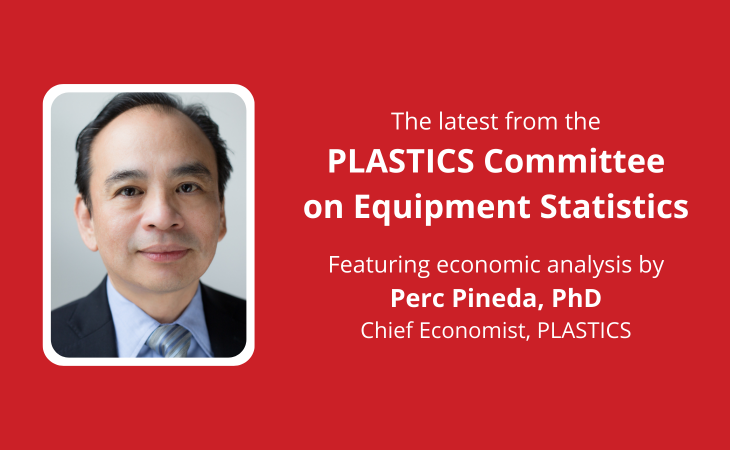
Industry News
Plastics Machinery Shipments in the First Quarter Showed Year-on-Year Growth
May 24, 2023 According to the Plastics Industry Association's Committee on Equipment Statistics (CES), shipments of primary plastics machinery (injection molding and extrusion) in North America declined in the fourth quarter. The preliminary estimate for the first quarter of 2023 showed a shipment value of $345.8 million, which was 20.1% lower than the previous quarter. However, compared to the same period last year, the value of shipments increased by 1.6%.
